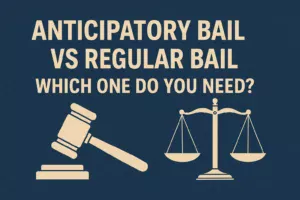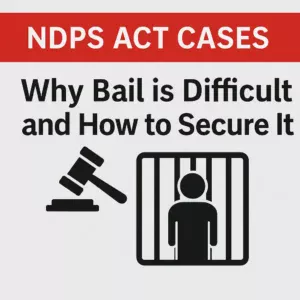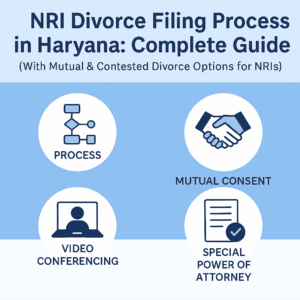In this article we have explained about Preventing Online Fraud in E-commerce
Introduction: Understanding the Threat of E-commerce Fraud
In the rapidly expanding digital world, e-commerce has become a cornerstone of retail and business. However, this growth has been paralleled by a significant increase in online fraud, posing serious threats to businesses and consumers alike. Understanding and preventing online fraud is not just a matter of security but also crucial for maintaining customer trust and business integrity.
The Rise of Online Fraud in E-commerce
As e-commerce platforms become more sophisticated, so do the methods of fraudsters. Online fraud in e-commerce can range from identity theft to payment fraud, and it significantly impacts both the revenue and reputation of businesses.
The Financial and Reputational Impact of Fraud
Online fraud doesn’t only lead to direct financial losses. It can also damage a company’s reputation, leading to a loss of customer trust, which is much harder to quantify and rectify.
Preventing Online Fraud in E-commerce: A Comprehensive Guide
Preventing online fraud requires a multi-faceted approach. Businesses must implement strategies that not only identify and mitigate fraud but also evolve with changing tactics.
Implementing Robust Verification Processes
One of the first lines of defense in preventing online fraud is robust verification processes. This includes secure payment gateways, two-factor authentication, and customer verification methods.
Advanced Fraud Detection Technologies
Leveraging advanced technologies like AI and machine learning can significantly enhance fraud detection. These technologies can identify patterns and flag suspicious activities in real-time.
Regular Updates and Security Patches
Keeping software and platforms updated is crucial in safeguarding against new vulnerabilities. Regular updates and security patches should be a part of any e-commerce platform’s security protocol.
Educating Customers and Employees
An informed base of customers and employees can significantly help in reducing the risk of online fraud.
Customer Awareness Programs
Educating customers about safe online shopping practices and how to identify potential fraud can help in reducing the risk of them falling victim to scams.
Employee Training and Vigilance
Regular training sessions for employees about the latest fraud trends and prevention techniques are essential. Employees should be taught to recognize and respond to potential fraud effectively.
Legal and Regulatory Compliance
Adhering to Compliance Standards
Complying with legal and regulatory standards, like PCI-DSS for payment security, is not just a legal requirement but also a trust signal to customers.
Data Protection and Privacy Laws
Understanding and adhering to data protection and privacy laws, such as GDPR, is crucial in maintaining customer trust and avoiding legal repercussions.
Conclusion: Building a Secure E-commerce Environment
Preventing online fraud in e-commerce is an ongoing challenge that requires vigilance, technology, and education. By implementing robust security measures, complying with legal standards, and fostering awareness, businesses can create a more secure online environment, protecting both themselves and their customers from the risks of online fraud.
FAQ on Preventing Online Fraud in E-commerce
- What is online fraud in e-commerce?
- Online fraud in e-commerce refers to illegal or deceptive activities conducted over the internet, targeting online transactions and businesses.
- How common is e-commerce fraud?
- E-commerce fraud is increasingly common, with the rise in digital transactions leading to more opportunities for fraudulent activities.
- What are the most common types of e-commerce fraud?
- The most common types include identity theft, credit card fraud, account takeover, phishing, and chargeback fraud.
- Can online fraud be completely eliminated?
- While it’s challenging to completely eliminate online fraud, businesses can significantly reduce its occurrence through effective strategies and tools.
- What is identity theft in e-commerce?
- Identity theft involves fraudsters stealing personal information to make unauthorized purchases or transactions in someone else’s name.
- How does credit card fraud occur in online transactions?
- Credit card fraud in e-commerce can occur when stolen card information is used to make unauthorized purchases online.
- What is two-factor authentication and how does it help?
- Two-factor authentication adds an extra layer of security by requiring two forms of identification before granting access to an account or transaction.
- What role does AI play in preventing online fraud?
- AI helps in detecting and preventing fraud by identifying patterns and anomalies that indicate fraudulent activities.
- How important are regular software updates in fraud prevention?
- Regular updates are crucial as they often include patches for security vulnerabilities that fraudsters might exploit.
- Why is customer education important in combating e-commerce fraud?
- Educating customers about safe online practices helps them avoid scams and recognize fraudulent activities.
- What is PCI-DSS compliance and why is it important?
- PCI-DSS stands for Payment Card Industry Data Security Standard, which sets requirements for secure card transactions, crucial for preventing payment fraud.
- How does GDPR impact e-commerce fraud prevention?
- GDPR requires stringent data protection measures, indirectly aiding in fraud prevention by safeguarding personal data.
- What is chargeback fraud and how can it be prevented?
- Chargeback fraud, or ‘friendly fraud,’ occurs when a consumer makes an online purchase and then requests a chargeback from the issuing bank after receiving the goods. Prevention includes clear communication, meticulous record-keeping, and fraud detection tools.
- Can small e-commerce businesses effectively combat online fraud?
- Yes, small e-commerce businesses can combat fraud by implementing secure payment processes, using fraud detection tools, and educating their customers.
- What is account takeover and how does it happen?
- Account takeover involves unauthorized access to a user’s e-commerce account, often through stolen login credentials.
- How can businesses detect fraudulent transactions?
- Businesses can use fraud detection software that analyzes transaction patterns and flags suspicious activities.
- Are mobile transactions more susceptible to fraud?
- Mobile transactions can be vulnerable due to less stringent security measures, but adopting mobile-specific security strategies can mitigate these risks.
- How does phishing contribute to e-commerce fraud?
- Phishing involves tricking individuals into revealing personal information or login credentials, often used for fraudulent transactions.
- Can machine learning algorithms predict and prevent e-commerce fraud?
- Yes, machine learning algorithms can predict potential fraud by analyzing data patterns and identifying anomalies.
- What security measures should consumers take when shopping online?
- Consumers should use strong, unique passwords, avoid sharing sensitive information, verify website security, and use secure payment methods.
- How can businesses ensure secure online payments?
- Businesses can ensure secure payments by using encrypted payment gateways, complying with PCI-DSS, and implementing additional verification processes.
- What is the role of SSL certificates in preventing online fraud?
- SSL certificates encrypt data transmitted between a user’s browser and the e-commerce site, safeguarding against data interception.
- How do return and refund policies impact chargeback fraud?
- Clear and fair return and refund policies can reduce chargeback fraud by providing legitimate avenues for customer grievances.
- What are the consequences of online fraud for businesses?
- Consequences include financial losses, damaged reputation, loss of customer trust, and potential legal issues.
- Is there a legal obligation for e-commerce sites to prevent fraud?
- While specific obligations vary by region, generally, e-commerce sites are expected to implement reasonable security measures to protect customers.
- How can real-time monitoring help in fraud prevention?
- Real-time monitoring can immediately identify and respond to suspicious activities, preventing potential fraud.
- What are ‘card testing’ scams in e-commerce?
- ‘Card testing’ scams involve fraudsters testing stolen credit card details with small online purchases to see if they are valid.
- Can customer reviews and feedback help in identifying fraud?
- Yes, customer reviews and feedback can sometimes reveal patterns of fraudulent activities or security lapses.
- How do changes in e-commerce trends impact fraud prevention strategies?
- As e-commerce evolves, businesses must continuously adapt their fraud prevention strategies to new technologies and changing consumer behaviors.
-
What future technologies hold promise for fraud prevention in e-commerce?
Future technologies like blockchain, advanced AI, and biometric verification are promising for enhancing e-commerce fraud prevention.












